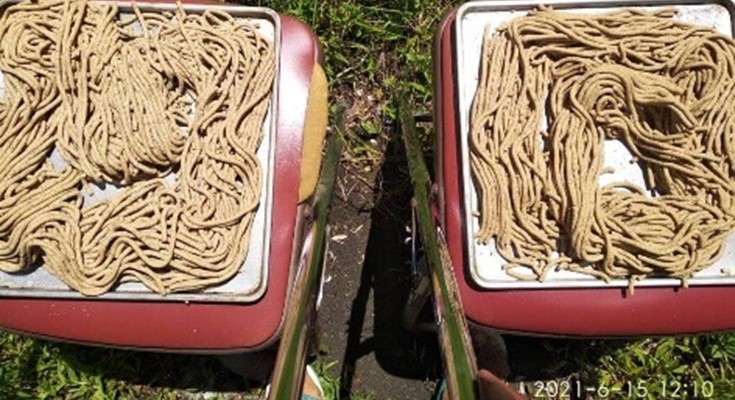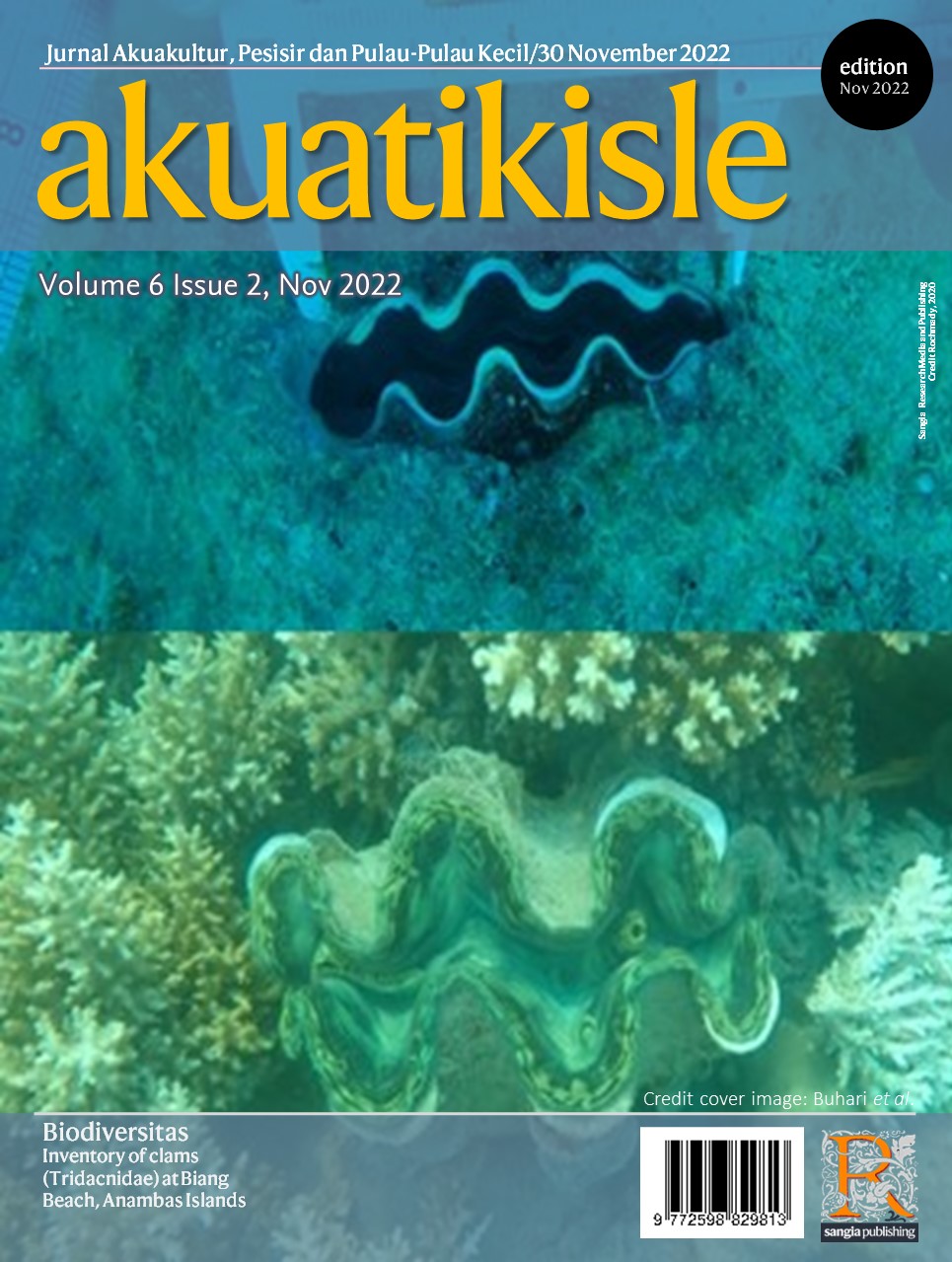Akuatikisle: Jurnal Akuakultur, Pesisir dan Pulau-Pulau Kecil
Full Length Article
Utilization of tuna innards as raw material for making fish feed based on organoleptic
Highlights
Generate NLP AI by Wizdam ID.
Abstract
Tuna is one of the abundant potentials in North Halmahera Regency, Tobelo. Tuna fish sold in several markets in the city of Tobelo in the form of intact or have been handled, thus tuna fish waste in the form of innards and gills is not utilized, causing a pungent odor at the sales location. The use of fish waste, one of which is an innards fish can be used as an alternative raw material for making fish feed. The raw material for making fish feed must have good nutritional quality including protein sources. This study aims to find out how to process tuna waste into fish feed and the level of respondent's preference for fish feed made. This research was conducted in October - November 2021. The results show that the average panelist assessment of the texture of artificial fish feed texture ranges from 5.45-6.4, the organoleptic value of artificial fish feed ranges from 5.15 to 5.7, the organoleptic value of artificial fish feed ranges from 5.2 to 5.65.
Keywords
Introduction
Section snippets
Material and Methods
Materials and methods from the full-text PDF of this article cannot be displayed.
Results
Results from the full-text PDF of this article cannot be displayed.
Discussion
Discussion from the full-text PDF of this article cannot be displayed.
Conclusions
Conclusions from the full-text PDF of this article cannot be displayed.
Acknowledgment
Acknowledgment from the full-text PDF of this article cannot be displayed.
Competing interest
The authors declare that they have no known competing financial interests or personal relationships that could have appeared to influence the work reported in this paper.
Conflict of interest
The authors declare that the research was conducted in the absence of any commercial or financial relationships that could be construed as a potential conflict of interest.
Ethical approval acknowledgements
No ethical approval required for this article. All procedures followed were in accordance with the ethical standards of the responsible committee on human experimentation (institutional and national) and with the Helsinki Declaration of 1975, as revised in 2008 (5)
Supplementary files
Data sharing not applicable to this article as no datasets were generated or analysed during the current study, and/or contains supplementary material, which is available to authorized users.
References (1)
Akerina, F. O., 2018. Cemaran Mikroba pada Ikan Tuna Asap di Beberapa Pasar Tradisional Tobelo, Halmahera Utara, Indonesia. Akuatikisle : Jurnal Akuakultur, Pesisir dan Pulau-Pulau Kecil, 2(1): 17–21.
Aslamyah, S. & Karim, M. Y., 2013. Organoleptic, physical, and chemical tests of artificial feed for milk fish substituted by earthworm meal (Lumbricus sp.). Jurnal Akuakultur Indonesia, 11(2): 124, ISSN: 1412-5269, DOI: 10.19027/jai.11.124-131.
Luhur, E. S. & Zulham, A., 2016. POTENSI PEMANFAATAN LIMBAH PERIKANAN DI BANDA ACEH Potential Use of Fisheries Waste in Banda Aceh. : 37–44.
Maulidiah, I. R., 2020. Pemanfaatan Limbah Ikan Cakalang (Katsuwonus pelamis) Sebagai Alternatif Tepung Ikan Pada Pembuatan Pakan Ikan Lele Dumbo (Clarias gariepinus). Universitas Jember, ISBN: 1964071320001.
Riyanto, B.; Uju & Halimi, S., 2012. Recovery Enzim Protease Dari Jeroan Ikan Tuna Dengan Teknologi Ultrafiltrasi Dan Reverse Osmosis. Jurnal Pengolahan Hasil Perikanan Indonesia, 15(2).
Safitri, M. N.; Aminin; Luthfiyah, S.; Robbah, A. & Mazida, A., 2020. Pembuatan Formulasi Pakan Apung Ikan Berbahan Baku Lokal. Jurnal Perikanan Pantura (JPP), 3(1): 31–37, ISSN: 1098-6596, Available: <http://journal.umg.ac.id/index.php/jpp/article/view/1404>.
Bibliographic Information
Cite this article as:
-
Submitted
18 May 2022 -
Revised
26 May 2022 -
Accepted
19 June 2022 -
Published
24 June 2022 -
Version of record
26 May 2023 -
Issue date
30 November 2022
-
Academic subject
Fisheries Science
Keywords
Copyright
Sangia Advertisement
Copyright © 2022 Akerina, F.O., Kour, F., Kitong, A.R., Ada, R.R., & Simange, R.. Sangia Research Media and Publishing. Production and hosting by Sangia (SRM™).  This work is licensed under a Creative Commons Attribution-ShareAlike 4.0 International License.
This work is licensed under a Creative Commons Attribution-ShareAlike 4.0 International License.
Disclaimer: All claims expressed in this article are solely those of the authors and do not necessarily represent those of their affiliated organizations, or those of the publisher, the editors and the reviewers. Any product that may be evaluated in this article or claim that may be made by its manufacturer is not guaranteed or endorsed by the publisher.
Comments on this article
By submitting a comment you agree to abide by our Terms and Community Guidelines. If you find something abusive or that does not comply with our terms or guidelines please flag it as inappropriate.










